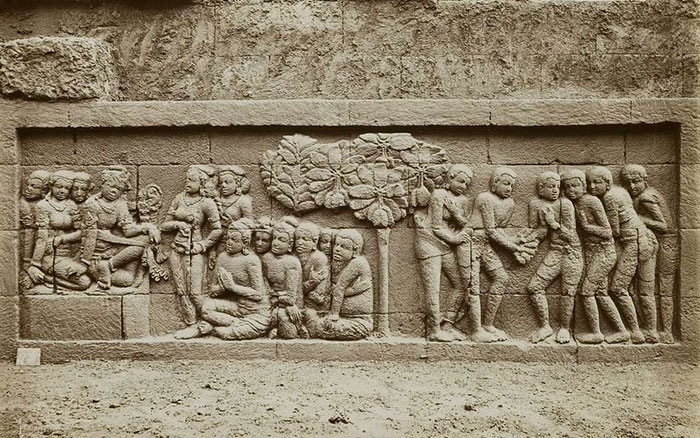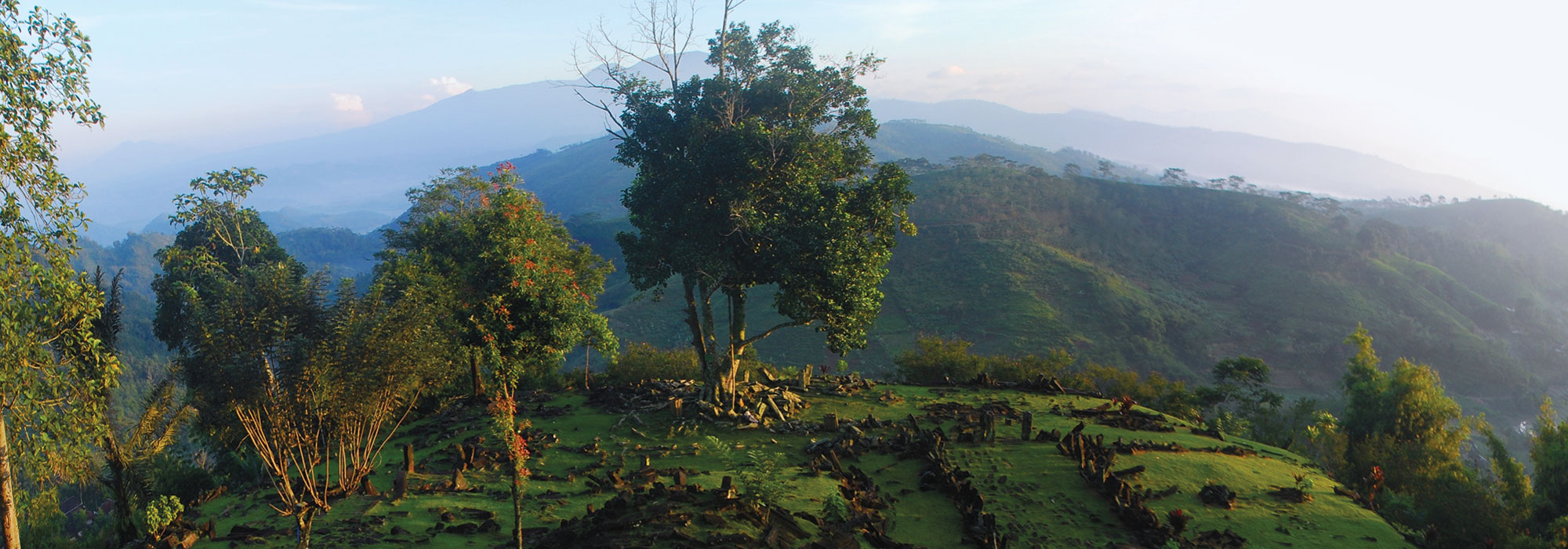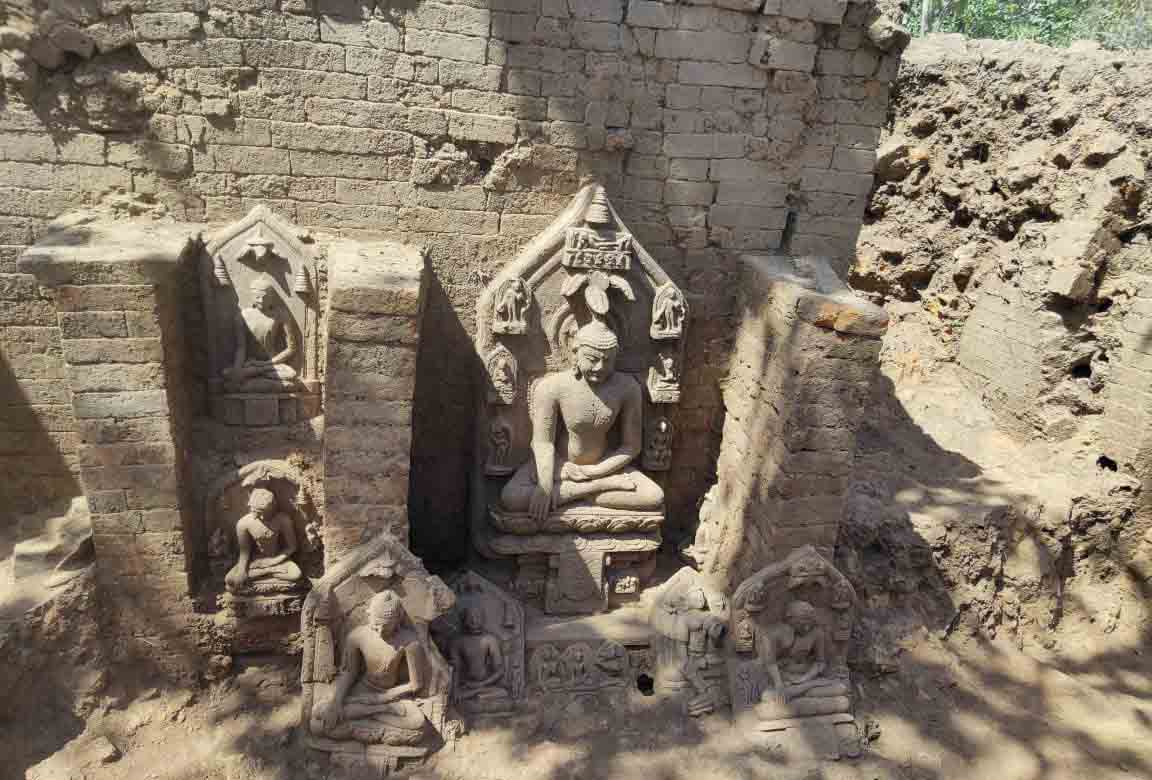
(Flickr/Hadi Zaher)
When Chinese pilgrim Hsuan Tsang arrived in Bamiyan in A.D. 632 he was awed by the sight of two massive statues of Buddha, rising 125 and 180 feet above the rugged valley floor. The statues, situated in niches carved out of the soft sandstone mountain face, were brightly painted and decorated with gold and jewels. They would have been dazzling in the intense sunlight of central Afghanistan. Hsuan Tsang was no less impressed by the 10 monasteries clustered in the surrounding caves and at the feet of the statues, housing more than a thousand Buddhist monks.
The monasteries eventually fell into ruin, a century or two after the arrival of Islam in the eighth century A.D. A series of conquerors—from the feared Mahmoud of Ghazni who forged a vast empire in the area in the eleventh century to Genghis Khan whose armies rampaged through Central Asia—wreaked havoc on the remaining buildings and population. For another thousand years, Muslims, offended by the images of Buddha, defaced the statues and the cave paintings that dot the honeycombed interior of the cliff face. Weather ate away at the statues' surfaces. Despite the abuse, in addition to normal wear and tear, the Buddhas of Bamiyan still dominated the valley.
Then, on March 2, 2001, the Taliban began to fire artillery at the statues. "The artillery probably did little damage," says Brendan Cassar, chief of cultural heritage at UNESCO's Kabul office, of the first Taliban attempts. Only by detonating explosives placed up and down the statues did they succeed in dislodging the Buddhas from their niches. By the end of that month, the 1,500-year-old statues were no more.
In the intervening years since these events, archaeologists and art historians have turned their efforts to studying the rubble left behind for new insights into how and when the statues were created. According to the Technical University of Munich's Erwin Emmerling, who led a team that examined the rubble, the explosions expelled wooden pegs and timbers that provide important—and previously unknown—clues to the construction techniques used to create the Buddhas. Emmerling discovered that the pegs and timbers were secured to the hewn rock with ropes to hold in place the layers of smooth clay resembling porcelain that once covered the statues' outer stone surface. Then by sculpting the clay, the artists created the lifelike folds in the Buddhas' robes. Further analysis showed that the clay contained a mix of straw, animal hair, and quartz, which also served to stabilize and protect the structures, and was likely one of the keys to their longevity.
The team also discovered that the Buddhas had been, as Hsuan Tsang reported, brightly painted. They found several layers of paint on the rubble fragments, a sign that the statues were repainted more than once as they faded. The original colors ranged from dark blues to daring pinks, reds, whites, and oranges, says Emmerling.
Most significantly, mass spectrometer tests on organic parts of the clay mix provide the first scientific dating of the statues; until now that dating was based solely on the style of the robes. To the team's surprise, the smaller Buddha appears to date from between A.D. 544 and 595, and the larger one between A.D. 591 and 644. Previously, most scholars familiar with Bamiyan had suggested a date from one to two centuries earlier. The new dating means that Hsuan Tsang saw the statues when they were relatively new. Even more importantly, it demonstrates that Buddhism was still thriving even as Islam began to spread into the region. This fits with recent scholarship that suggests that Afghanistan adopted Islam slowly, and that the new religion was part of a diverse and vibrant mix of Buddhism, Hinduism, and even Christianity until about A.D. 1000. On the 10th anniversary of the demolition of the Buddhas this past March, a team of UNESCO representatives gathered in Paris to commemorate the event and take stock of the site. Various plans to rebuild the Buddhas have been rejected as too costly and difficult, says Cassar, who took part in the meeting. Although he doesn't rule out supporting the reconstruction of the Buddhas someday in the future, he adds that the focus today is on completing the work—$5 million worth in the past seven years—of plugging dangerous cracks in the unstable niches, removing unexploded mines and bombs near the statues' bases, and conserving what they can from the rubble left behind.
Emmerling warns that the remaining rubble will soon degrade, since it is made of soft sandstone and now lacks its protective clay covering. Injecting an organic silicon compound into each piece of rubble might slow or halt that decay, but this process would require either building a small but expensive factory in Bamiyan or moving the rock to Germany for treatment, a daunting prospect involving the organization and transport of hundreds of massive boulders. In the meantime, the team is working on a 3-D model of the cliff face that shows where each piece of rubble came from in the original statues. UNESCO representatives and Afghan officials are also creating a site museum, due to open this summer. Cassar says it will be modest in scope but will explain both the creation and destruction of the statues. Its opening will mark a new beginning of sorts for the battered but unbowed Buddhas of Bamiyan.











